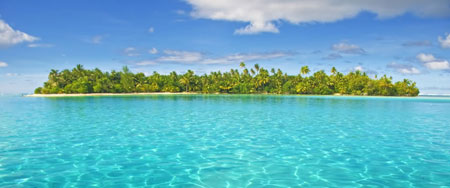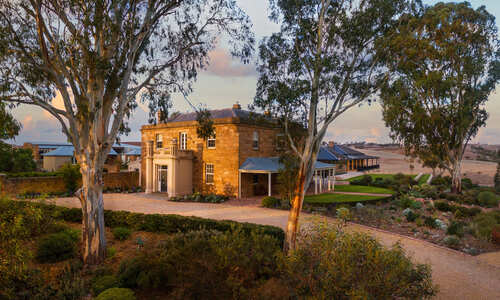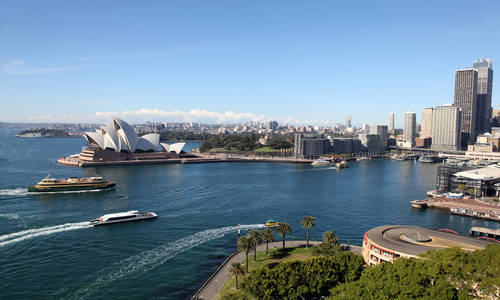Article content
22 August 2012 by Luke McCormick
The mesmerising beauty of the South Pacific is the stuff of travel clichés: crystal-clear lagoons, immaculate strips of beach, palm-fringed atolls surrounded by coral reefs, hillsides dripping with tropical foliage and volcanoes that rumble against cloudless skies.
Much of the action centres in and around the water. You can dive with whales and manta rays, snorkel with more tropical fish than you can shake a flipper at, surf waves unbroken since they left Antarctica, kayak around mangrove-edged lagoons or hoist a sail and head for the horizon.
The region is spilt roughly into three main groups: Melanesia to the west, where Fiji is found; Polynesia to the east, which includes Samoa, Tahiti and the Cook Islands; and Micronesia to the north. Travel in the Pacific was for a long time an expensive and time-consuming business, but with international flights now servicing the main islands and many airline alliances offering complimentary stopovers with flights to Australia and New Zealand, it's easier than ever to play at being castaway.
Cook Islands

A beautiful collection of 15 islands and atolls, the Cook Islands offers true isolation - tropical style - with warm weather, bone-white beaches, rich and abundant seas and colourful local characters. It's a place with an intriguing history, named after Captain Cook, who fell upon the islands towards the end of the 18th century, but first discovered by the roaming Polynesians centuries before. Arriving in flotillas of vakas, traditional double-hulled canoes, the Polynesians had settled on Rarotonga and some of the outer islands by 500 ad. The ceremonies and cultural practices of these early settlers still play an important part in island life, alongside those brought in by Christian missionaries in more recent times.
Bordered by a flame-orange reef and sparkling white beach, and rising to a forested mountain interior, the main island of Rarotonga has some surprisingly modern touches, with fine-dining restaurants and busy bars to explore. Hook-shaped Aitutaki is barely conscious by comparison, yet its powder-blue lagoon is one of the treasures of the South Pacific. Further afield, the remote outer islands offer an undiluted taste of authentic Cook Islands culture.
Regions
Where to stay
Te Manava Luxury Villas & Spa, Rarotonga
Fiji

Sun-soaked Fiji is blessed with 333 islands, many uninhabited, almost all fringed by white-sand beaches and clear waters that offer superb opportunities for swimming, surfing, snorkelling and scuba diving.
The abundant seas reveal vivid displays of soft corals. Reef sharks, blue ribbon eels, barracuda and spotted sweetlips are just a few of the many hundred marine species that can be sighted - and it was Fiji's incredible underwater life that led explorer, film-maker and Wexas Honorary President Dr Jean-Michel Cousteau to set up an eco-sensitive resort on Vanua Levu.
Most Fijians live on the main island of Viti Levu, which contains the nation's capital, Suva. However, most travellers arrive in Fiji - one of the most accessible of all the Pacific island nations - via the international airport at Nadi on the west coast. From there, the Yasawa, Mamanuca and other outer island groups can be easily accessed by boat or seaplane, and a tremendous choice of luxurious resorts awaits. Each will delight in showing you its own small corner of Pacific paradise, but wherever you decide to go you'll be met by generous Fijians and welcomed with a smile and the friendly greeting, "Bula".
Regions
Where to stay
Tadrai Island Resort, Mamanuca Islands
French Polynesia

The islands of French Polynesia are scattered across two million square miles of the South Pacific Ocean. Its five great archipelagos offer every variation of the dream island paradise. Some rise dramatically out of the blue waters, their jagged peaks stark outlines against the blue sky, others seem to barely float above the surrounding surf.
There may be more than a hundred islands to choose from, but the three archipelagos most visited are the Society Islands, comprised of Tahiti, Mo'orea, Bora Bora, Huahine, Ra'iatea and Taha'a, and tiny Maupiti; the Tuamotus, also known as ‘ Tahiti's Strand of Pearls'; and the Marquesas or ‘Mysterious Islands', a long-loved escape of artists, writers, adventurers and musicians. The two other island groups, the Austral Islands and the Gambier Archipelago, may well be less visited but are as postcard perfect as the rest.
Tahiti is the main transport hub of all French Polynesia and is easier to travel to than you might think, with regular departures from both Los Angeles and Auckland with Air New Zealand and its partner airlines. Air Tahiti and Air Moorea operate flights to the other islands from Tahiti.
Where to stay
Intercontinental Tahiti Resort, Tahiti
Samoa

Samoa lies at the heart of the South Pacific in an archipelago of ten islands, half of which are uninhabited. It's a country dominated by volcanic land formations, lush rainforests and magnificent coral reefs. Thanks to its size and terrain it's also physically imposing in a way that most Pacific islands are not. The island of Savai'i, one of Polynesia's biggest, is home to the region's largest shield volcano, Mount Silisili.
'Upolu, the smaller of Samoa's two largest islands, is where three- quarters of the country's near 200,000 population live and where you'll find the small capital Apia and the international airport. It's here that most visitors get their first taste of Samoan life, fa'a Samoa, which remains firmly rooted in the country's ancestral customs. It's also a strongly Christian country and on Sundays you'll see families filing out of their traditional fale (houses) and into their local church in all their weekend finery. This mix of rich tradition, set against a magnificent backdrop makes Samoa a fascinating destination, and one that visitors are welcomed to with open arms - its people are considered to be the friendliest in the South Pacific.






